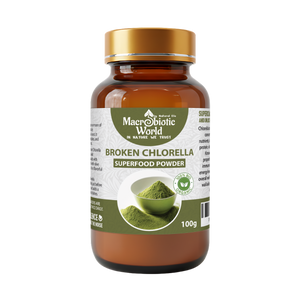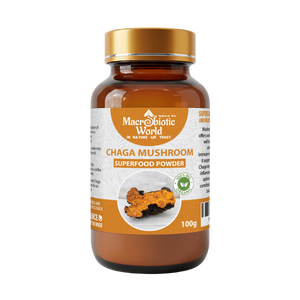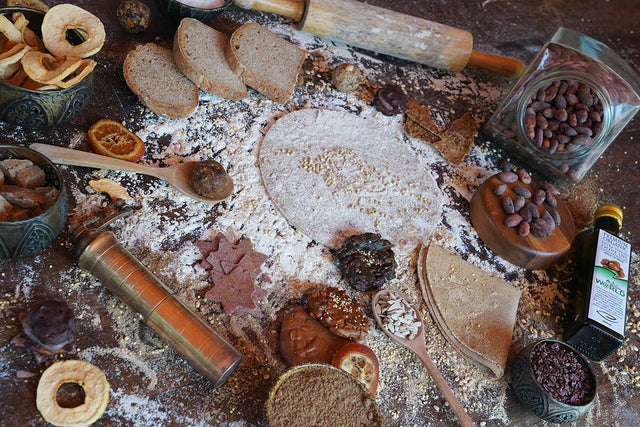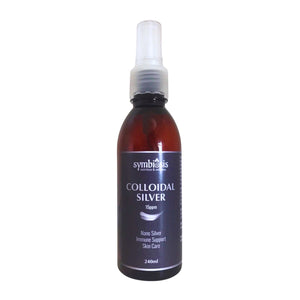NATURAL EFE | BREAD IN ANCIENT GREECE

Cereals, and especially barley and wheat, have been cultivated in Greek since the Pelasgian era. It should be noted that they played an important role in the life of the ancient Greeks and influenced their character. The most ancient of the cereals was considered to be barley, but this is a matter of further research. It is mentioned more often than wheat because it was easy to produce, more efficient , cheaper and, therefore, more accessible to the people The barley, and sikrithareni breads played a part, and acquired a sacred meaning in the life of the Greeks, as far as they were used for various ceremonies, as well as the wheat The lady The food for the ancient Greeks was bread, which was made from barley or wheat. Homer gives us enough information about cereals. In fact, he called the Greeks bread eaters. Between the time of Homer (8th century BC) and that of the poet Simonides (6th century BC) the information that is given to us about bread is little, We observe in one Simonides's poem that neither if mills search nor sieve nor sludge dung manure nor to asphalt assault zii That is, the poet Simonides complains in his poem about a woman who neither wants to catch the mill, nor the sieve, nor to throw garbage out of the house, nor to sit next to the oven, because he was afraid of smoke Also in the weddings of antiquity, a fairly well-established way for the bride was the kiskino, because. Probably, the sifting was done at that time by the women themselves in the houses. With the sieves the ancient Greeks pierced the flour from the bran. With the nla kiskina they made the white flours, finely sifted, which they called flour, after a second category , which was somewhat coarser and more coarsely sifted, and they called it krimna, and finally a unified category, which was called alfita. We must emphasize that these three categories, flour, flour, and salt were just ways of preparation. In the time of Pericles it was now established that flour was a derivative of wheat and alfita was a derivative of barley. Wheat flour bread was very thin, in contrast to barley bread, which was not very thin. This leads us to the conclusion that alfita and honor were not ground in mills but elsewhere.

We also have indications that in the 5th century BC, the making of alphas was a separate profession from the bakery 'In the State of Pilate we are given the following: people to be fed, will arrive at any time either with barley, or with wheat, salt that will they bake, or they will knead it, or they will make some kind of cakes and bread. During the 5th century the appearance of the cartoons takes place. In the beginning, the bakers supplied the Athenian houses with bread, then the bakers appeared, who bought the breads from the bakers and sold them. One of the best bakers of antiquity was Thearion, about whom Aristophanes Regarding the art of bakery, Chrysippos Tyaneos gives us the following:. If you make it (the faton) from solid dough, it will become both shiny and wide for dry eating, but if made from soft dough, it will be light but oily. Kpivanikios and Fournakios favor the ultimate dough. The main ingredients of bread were Flour. Alfita, Krimna, Chondroi, Rice, Semidalis, Lentils and others The instruments for making the bread were the Krivanos, (oven), the pnos (small oven), the Maktra (dough boats), and the Plathanos (form). The ancient Greeks made many kinds of bread. In general, the breads in ancient Greece were innumerable. They all did not have excellent preparation. For this reason we will list some of them, as any further reference goes beyond the limits of the present study.
Bread, The breads, which were made from yeast (nitron).

𝗡𝗮𝘀𝘁𝗼𝘀, Topsomi, which contained spicy or sweet substances
𝗜𝗽𝗻𝗶𝘁𝗶𝘀, Topsomi, which was baked in the pitcher or in a small oven.
𝗦𝗽𝗼𝗱𝗶𝘁𝗶𝘀, The bread, which was baked under the ashes
𝗞𝗹𝘃𝗮𝗻𝗶𝘁𝗶𝘀, The bread, which was baked in the oven. Some of the most important breads of antiquity were the following
𝗔𝗰𝗵𝗮𝗶𝗻𝗮𝘀, Bread, which were made by women in honor of Demeter during the Thesmophoria. They were usually large loaves of bread. There was also a feast for these loaves, which was called Megalartia.
𝗗𝗶𝗽𝘆𝗿𝗼𝘀. Bread baked twice (bread baked twice), ie the nut. They were hot breads, for the preparation of which a variety of ingredients were needed, such as cheese, pepper, salt. This is confirmed to us by the Athenian, that is, breads, which were baked twice, Orivasios states that the fiery breads were baked twice to be rubbed. Procopius informs us that the soldiers had in their mousses kysiras (alaines), in which they had fermented breads and carried them with them on military marches. Finally, Su is himself gives us a very important testimony. So the ancient bipyrus bread was called pakamas by the Romans, and rusk in modern Greek.
𝗘𝘁𝗻𝗶𝘁𝗮𝘀. It was the bread of the popular classes. It is considered to be the common bread, as long as it ensured satiety. This bread was also called diaper bread. Panos will say flood, or crowds. From the word panos comes the Latin Panis and today's Italian Pane, meaning bread. In various other areas, this bread had different names, such as, pekithita, lekithita ', or even' ennita.
𝗘𝘀𝗰𝗵𝗮𝗿𝗶𝘁𝗶𝘀. It was grilled bread, and it was eaten after the meal, after dipping it in wine. It was soft bread, and is considered one of the most wonderful breads of antiquity. Lygeus Samios in a letter to Diagoras says about the breads that were sold in the Athenian market: great. At the beginning and in the middle of the banquets they are offered sparingly. These loaves were finely ground to achieve a uniform baking. The Athenian * mentions a and full-fledged episagousi dissertation called the distinct thank you, who's so kerasite the memasi and the softness and such instinct has to wlykyn D, that is, after they are full (after) the full Pleasure with the introduction to the table of the so-called breadcrumbs, which they baptize in sweet wines, thus making it soft equivalent to sweet bread.
Also, the Athenian gives us the following: the escharites and from frying pan with oil on the surface are clearer, that is, the eschariti bread, is soft, and also fried with olive oil, it is juicier. In another report, the Athenian. that is, after opening warm escharites, you dip them (dip) in sweet (syrup. And Isichios mentions something that confirms it to us, Suidas, that that is, aeschorite bread on Lebanon At this point we observe Finally, we observe that in the Bible there is a reference to the people being given ascharites and laganos at the same time,
𝗧𝗵𝗮𝗿𝗴𝗶𝗹𝗼𝗻, 𝗼𝗿 𝗧𝗵𝗮𝗹𝘆𝘀𝗶𝗼𝘀 (Thalyssa, the beginning of the harvest, also Thalysia, the offering of the first to part of the goddess Artemis) This bread was the first, which was prepared after the harvest of wheat, during the month of Thargilos (ie in mid-May to mid-June), during the feast of Arielion, to part of Artemis and Apollo. Thariglon is called the bread from the harvest first. This is confirmed by the Athenian Krivanitis. This bread is mentioned by Aristophanes to the Farmers. These loaves had a cylindrical base, and were prepared in special molds, which were covered with ashes to bake. They were white breads, which they ate hot. A report is given to us by Orivasios, a physician of antiquity, about the bread of Krivanite: and not semidale born and trivial, and the softness most often seen in the bread of the crib. I said, laying it on the ashes on the fire, I covered the top of it with a towel, as if it were coal for the most part, and in fact, from above, as the place looks like this, the bread is very dry. If it is very useful for the abdomen, (that is, it is made from well-grated semolina and the bread is softer, which is made in the kiln. with another ash, so as to create a strong hearth and above all to have the upper heating in the place where it is baked. This bread is the driest of all, It could be considered the most beneficial for the intestine). The Athenian makes several references to the krivanitis bread: a..and the krivanitis of all virtues awaits a strong gap, apt, digestible, salty for delivery, nor does it gallop.
Oginos mentions that: or not much while dispersing unleavened bread kfivanite pure of bitter wine. pre-forced, on the basis of which I learned that krivanitis bread was used in medicine, after previously dipping it in kpasi. This bread was very useful in medicine because it was well kneaded, as well as baked. Because the island was made in the kiln, which was made of metal, or clay, it was uniform, and so the bread had a special taste.
𝗖𝘂𝗯𝗲𝘀. Square breads, which were made with dill, cheese and olive oil, and baked in the oven. They were similar to Thergilos. The only difference was that the Cubes were made all year round in Thargilos only on the feast of Thargilia, and from the first Harvest of the year Laganon. According to the Liddle and Scott Dictionary, the laganon (modern lagana) was a thin, broad placenta of flour and oil. According to Aristophanes ka laganon, the estin bread is oiled (laganon, which is bread dipped in olive oil). From a report by Aetius, a physician of the 4th century AD, we see that they also used lagana in the tatrik ... and it was also offered in the form of a roasted hen in zoom, roasted with a healthy foot and an acyla ... that is, to give salt and raps and lagana boiled in chicken broth, pork legs, and ham with bone well boiled). Kimis Alexandrinos mentions that lagana is also made in the pan, and also that this food is very common among the Israelis.
in the names of the pan, of the lagan cap of the semolina, One could, however, assume that these spices were made to be used for the offer (today 'offer'), of Obelia, Aristophanes mentions our obolia to the Georgians, when a very common bread There are two versions of the name of this bread, a) because it was sold in the market for an obolos (obolos is a monetary unit), or b) because it was baked in the obelisk (the obelisk is a special form) The versions are confirmed by us. The Athenian Aodevelian bread is called that of obolou pipraseta, the famous Alexandria or otnovoisko optato (that is, the obelias bread is called so either because it was bought for an obolos, as in Alexandria, or because it was sold in). Those who carried the loaves were called Skewers. This is confirmed to us again by the Athenian a. ..> (that is, those who carried the spears to their shoulders during the pompons were also called skewers). Eustathios mentions in a testimony that the spear bread is called in this way, because it is bought for an obol, and according to others, because it is baked in obelisks. In another testimony, Eustathios mentions that the spear was made on the spears and not Isichios also confirms that it was sold to an obolos.
𝗖𝗵𝗼𝗻𝗱𝗿𝗶𝘁𝗶𝘀, bread made from zea (a type of grain), or coarsely ground wheat
𝗞𝗮𝗽𝘆𝗿𝗶𝗮, something similar to today's
𝗔𝗿𝘁𝗼𝗹𝗮𝗴𝗮𝗻𝗼𝗻 toast, a type of lagana flavored with pepper, milk, wine and olive oil, which was sold by the Artokapiros to the Artokapiros , something similar to today's Easter buns, made with Egryfias milk, flour bread, and grilled. It was also made from semolina, and probably in this case it can be related to today's halva. There is a testimony about this from Athanasios the Theologian. He set up Abra4m on the stage towards Sarah and said to him: Hurry up and fall asleep.
"We believe that what Abraham asked of Sarah was something like the present halva."
from raw dates, flour and water. And again, these would mean that you have to spend for these processes. It is characteristic according to many testimonies that this bread was made in hot ashes
𝗘𝗽𝗮𝗻𝘁𝗵𝗿𝗮𝗰𝗶𝘀. Bread thinner than lagana, grilled on a grill
𝗞𝗿𝗶𝘃𝗮𝗻𝗼𝘀.They made this bread in clay pots, which were wide at their base.They placed fire or coals around it to bake. This bread was offered to the brothers by the bride, during the wedding ceremony.
𝗣𝗹𝗮𝗸𝗶𝘁𝗮𝘀. A flatbread, baked in the oven.
𝗔𝘁𝗮𝘃𝘆𝗿𝗶𝘁𝗶𝘀. Bread plasignathos (filling) according to the Athenian.
𝗠𝗮𝗸𝗼𝗻𝗶𝗱𝗲𝘀 𝗼𝗿 𝗟𝗶𝗻𝗼𝘁𝗼𝘀. Breads sprinkled with poppy seeds or flax.
𝗞𝗼𝗹𝗹𝗮𝘃𝗼𝘀 It was also called Kilikios Artos. Small cylindrical breads from a new crop. It was served hot, and it was white.
𝗧𝘆𝗿𝗻 Bread, which contained cheese. A type of today's cheese bread (or cheese pie).
𝗔𝗻𝗴𝗲𝗹𝗮𝗶𝘀, A common bread
𝗔𝘂𝘁𝗼𝗽𝘆𝗿𝗼𝘀, or Harvester. Wholemeal bread.
𝗢𝗿𝗶𝗻𝘁𝗵𝗼𝘂 𝗼𝗿 𝗢𝗿𝗶𝗻𝗱𝗶𝘀. Rice bread.
𝗡𝗮𝘀𝘁𝗼𝘀. Large well-kneaded, round and white breads.
𝗧𝗵𝗿𝗼𝗻𝗼𝘀. Large breads that were cut into slices.
𝗩𝗮𝗸𝗰𝗵𝘆𝗹𝗼𝘀. Bread, which was baked in very hot ashes.
𝗔𝗳𝘁𝗼𝗽𝘆𝗿𝗶𝗮𝘀. Dough plates, which were baked on the coals, and made toasts
𝗞𝗮𝗽𝗽𝗮𝗱𝗼𝗸𝗶𝗼𝘀, 𝗼𝗿 𝗚𝗲𝗻𝘁𝗹𝗲, 𝗼𝗿 𝗟𝗮𝗰𝗵𝗺𝗮𝗻. Bread made with milk, olive oil and salt. The Cappadocians made the best breads of antiquity.
𝗩𝗼𝗹𝗶𝘁𝗶𝗻𝗼𝘀 Mushroom-shaped bread with poppy seed.
𝗦𝗶𝗺𝗶𝘁𝗶𝘀. Bread with sesame.
𝗦𝗶𝘀𝗮𝗺𝗼𝗽𝗮𝘀𝘁𝗼𝘀. Today's pastel.
𝗧𝗵𝗶𝗮𝗴𝗼𝗻𝗲𝘀. Bread in honor of Then in Aetolia.
𝗘𝗿𝗶𝗸𝗶𝘁𝗮𝘀. And other wholemeal bread.
𝗙𝗼𝘂𝗿𝗻𝗮𝗸𝗶𝗼𝘀 𝗼𝗿 𝗞𝗹𝗶𝘃𝗮𝗻𝗶𝗸𝗶𝗼𝘀, 𝗼𝗿 𝗔𝗽𝗮𝗹𝗼𝘀, Artos, which was made from yeast, with the addition of milk in combination with oil and salt.
𝗘𝗿𝗶𝗸𝗶𝗱𝗲𝘀. Wholemeal breads from barley.
𝗔𝗻𝗮𝘀𝘁𝗮𝘁𝗼𝘀, this bread was made for the arriforians, who were two girls who were chosen in antiquity to carry utensils of Athena of Polia during the feast of the Arphorion The light and spongy bread.
𝗕𝗿𝗲𝗮𝗱𝘀 𝗼𝗳 𝘁𝗵𝗲 𝗔𝘁𝗵𝗮𝗺𝗮𝘀𝗶𝗮𝗻𝘀. Word rather Macedonian.
𝗞𝗿𝗶𝗺𝗻𝗶𝘁𝗮𝘀. Cartilage bread.
𝗔𝗿𝘁𝗼𝗽𝗶𝗸𝗶𝘁𝗼𝘀 𝗔𝗿𝘁𝗼𝘀 Bread made from very hard dough.
𝗩𝗹𝗼𝗺𝗶𝗮𝗶𝗼𝘀 𝗔𝗿𝘁𝗼𝘀. Square bread.
𝗜𝗺𝗶𝗮𝗿𝘁𝗼𝘀 Semi-circular bread.
𝗠𝘆𝘀𝘁𝗶𝗹𝗶. Hollow bread.
𝗞𝗿𝗶𝗺𝗻𝗶𝘁𝗮𝘀 Thessalos bread, round.
𝗞𝗼𝗹𝗹𝘆𝗿𝗮𝘀, 𝗞𝗼𝗹𝗹𝗶𝘅 Bread from coarse flour, which first appeared in Boeotia. It was made of rye, small in size and was offered mainly to children, as baby food. Aristophanes confirms this to us. In fact, Aristophanes gives us a very important reference, that they gave the glue to the marathoners as a trophy. Liddle & Scott report that glue is a roll of bread. So if they were giving the 'kollyra' to the Marathon Warriors as a trophy, it must have been a round shape. that is, something like today's bun.






Leave a comment